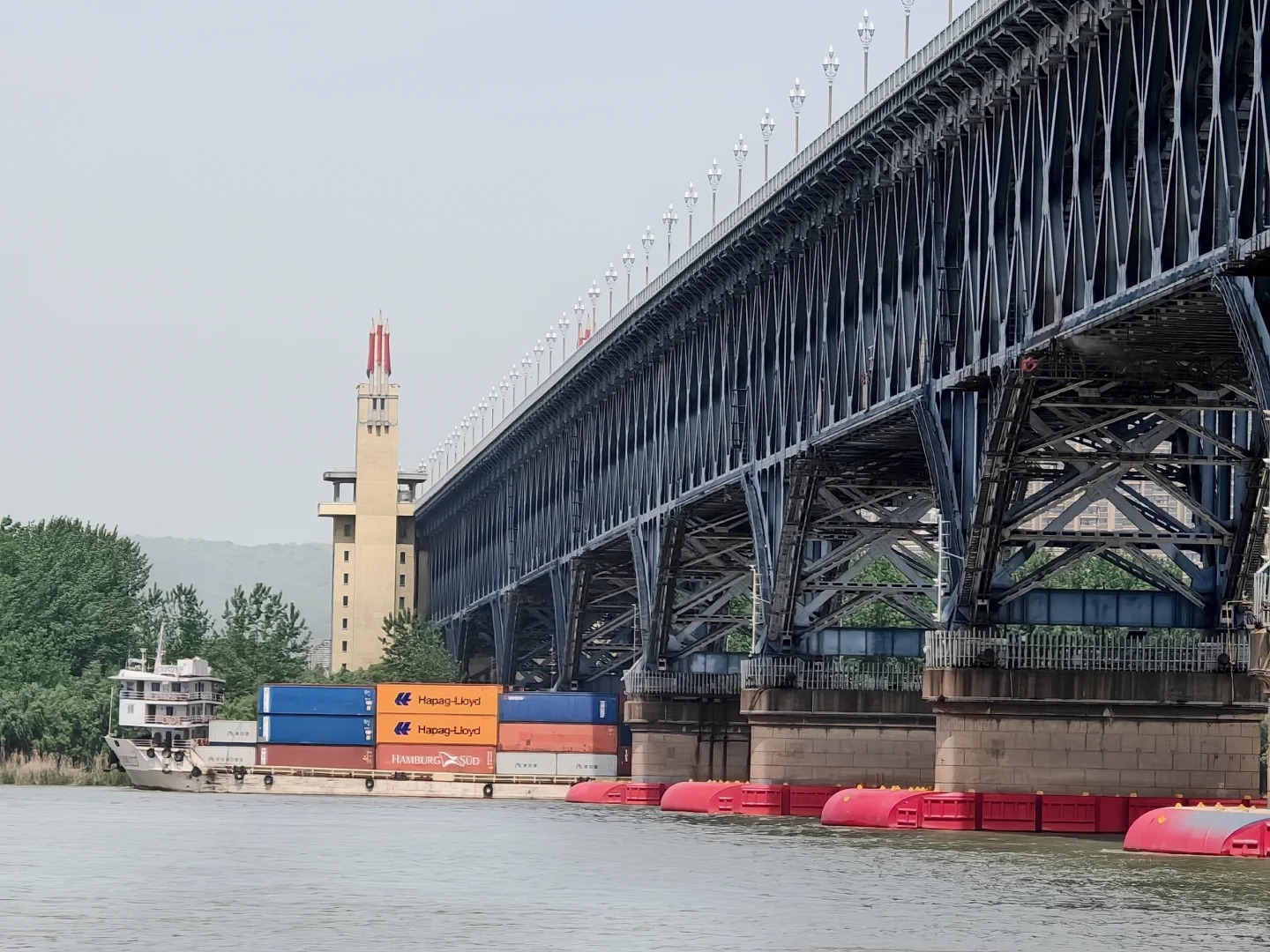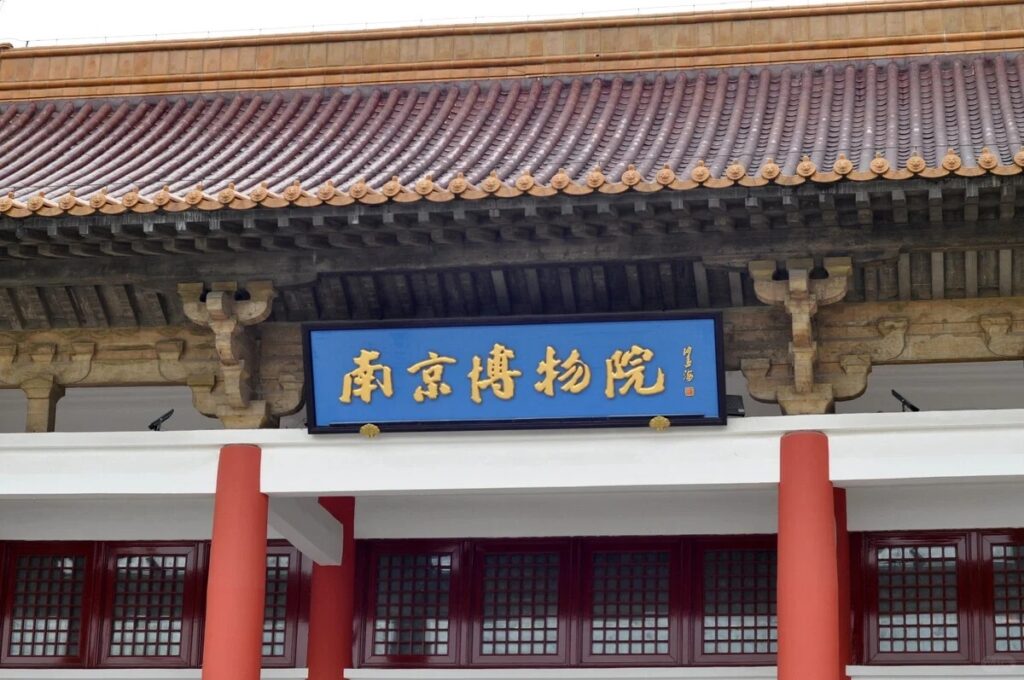Visiting Information
| Information | Details |
|---|---|
| Chinese Name | 南京长江大桥 (Nánjīng Chángjiāng Dàqiáo) |
| Location and Address | Crossing the Yangtze River, connecting Pukou District and Gulou District, Nanjing, Jiangsu Province, China |
| Opening Hours | Open 24 hours (for traffic); Pedestrian walkways open from 5:00 AM to 10:00 PM |
| Entrance Fee | Free |
| How to Get There | By Metro: Take Line 3 to Nanjing Yangtze River Bridge Station By Bus: Take bus lines 18, 31, 52, 133, or 307 to Nanjing Yangtze River Bridge Station By Taxi: Ask to be taken to “Nanjing Yangtze River Bridge” (南京长江大桥) |
| Best Time for Visit | Spring (March to May) and Autumn (September to November) for pleasant weather and clear views |
| Contact Info | Phone: +86 25 85577346 (Nanjing Transportation Bureau) Email: Not available |
Overview
The Nanjing Yangtze River Bridge is a double-decked road-rail truss bridge across the Yangtze River in Nanjing, Jiangsu Province, China. Completed in 1968, it was the first bridge to be built across the lower reaches of the Yangtze River. The bridge is an important symbol of modern Chinese engineering and a significant landmark in Nanjing.
Historical Background
The construction of the Nanjing Yangtze River Bridge began in 1960 and was completed in 1968. It was a major infrastructure project undertaken entirely by Chinese engineers and workers, without foreign assistance, during a time when China was relatively isolated. The bridge’s completion marked a significant achievement in China’s industrial and engineering capabilities, symbolizing the country’s self-reliance and technological progress during the 20th century.
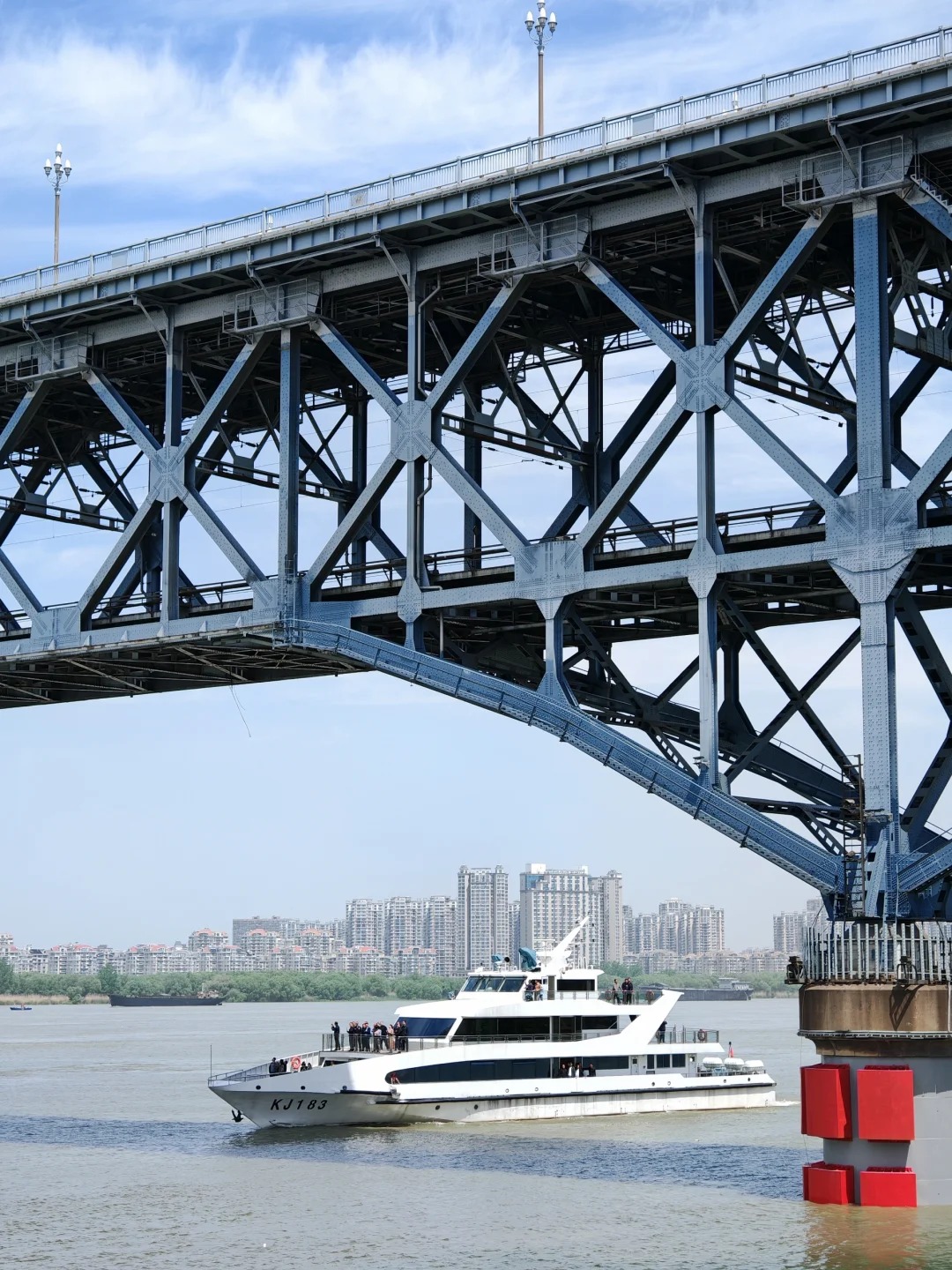
Architectural Features
- Double-Deck Design: The bridge features a unique double-deck structure with the upper deck serving road traffic and the lower deck carrying railway tracks. This design efficiently utilizes space and allows for simultaneous road and rail transportation across the Yangtze River.
- Truss Structure: The bridge employs a truss design, which provides strength and stability while using less material than solid beam constructions. The intricate steel framework is not only functional but also adds to the bridge’s aesthetic appeal.
- Length and Span: The total length of the bridge is 6,772 meters (22,212 feet), with a main span of 160 meters (525 feet). Its impressive length and span made it a marvel of engineering at the time of its construction.
- Statues and Decorations: The bridge is adorned with decorative elements that reflect Chinese culture and history. At each end of the bridge, there are large statues representing workers, peasants, and soldiers, symbolizing the unity and strength of the Chinese people.
Cultural Importance
The Nanjing Yangtze River Bridge holds significant cultural importance in China. It is not just a transportation link but a symbol of national pride and technological achievement. The bridge represents China’s ability to overcome challenges and progress independently. It has been featured on postage stamps, in literature, and in various forms of art, becoming an integral part of Nanjing’s identity and a source of inspiration for the Chinese people.
Surrounding Attractions
- Yangtze River Bridge Park: Located at the southern end of the bridge, this park offers excellent views of the bridge and the Yangtze River. It features landscaped gardens, walking paths, and informational displays about the bridge’s history and construction.
- Yuhuatai Memorial Park of Revolutionary Martyrs: Situated nearby, this park is dedicated to revolutionary martyrs and offers a glimpse into China’s modern history. It includes memorials, exhibitions, and beautiful gardens, providing a contemplative space to learn about important historical events.
- Zhongshan Wharf: This historic wharf along the Yangtze River offers picturesque views of the river and the bridge. It’s a popular spot for locals and tourists alike, especially for watching sunsets and enjoying riverside activities.
- Jiming Temple: One of the oldest temples in Nanjing, Jiming Temple is located not far from the bridge. It offers a serene environment with beautiful architecture, providing a contrast to the modern engineering of the bridge and a glimpse into Nanjing’s rich religious history.
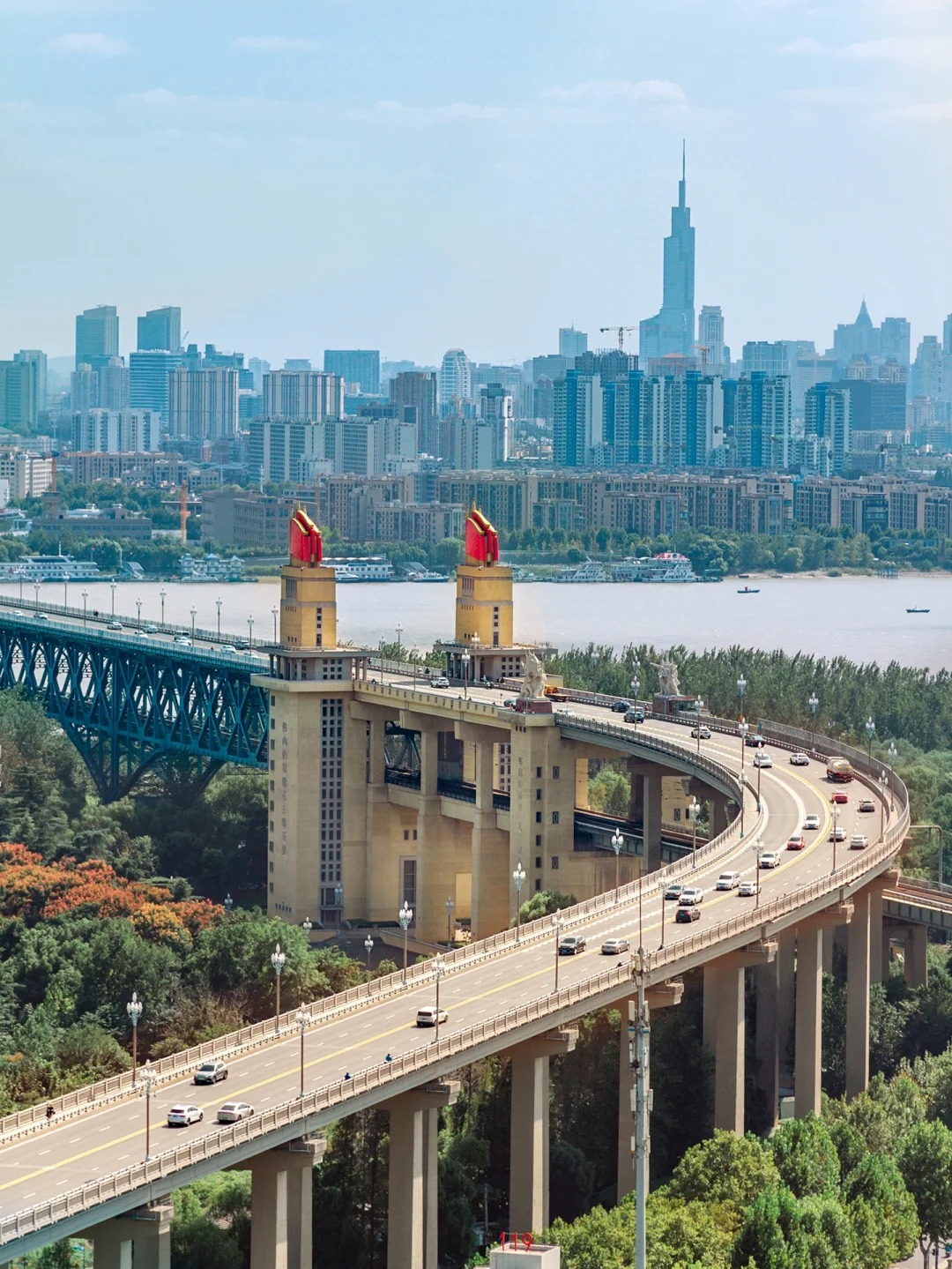
Photography Opportunities
- Panoramic Views: The pedestrian walkways on the bridge offer unparalleled panoramic views of the Yangtze River and the Nanjing skyline. These vantage points are perfect for capturing wide-angle shots that showcase the bridge’s impressive scale and its surroundings.
- Sunset and Night Photography: The bridge is particularly photogenic during sunset and at night when it’s illuminated. The play of light on the water and the bridge’s structure creates stunning visual effects, ideal for dramatic and atmospheric photographs.
- Architectural Details: The intricate truss structure and decorative elements of the bridge provide excellent subjects for detail-oriented and abstract photography. Close-up shots of the steel framework or the statues at the bridge’s ends can yield interesting and artistic images.
- Riverfront Perspectives: The areas along the riverfront, such as Yangtze River Bridge Park and Zhongshan Wharf, offer unique perspectives of the bridge. These locations allow photographers to capture the bridge in its full context, including its reflection in the river and its relationship to the surrounding landscape.
Modern Importance
- Transportation Hub: The Nanjing Yangtze River Bridge continues to serve as a crucial transportation link, facilitating the movement of people and goods across the Yangtze River. Its double-deck design efficiently handles both road and rail traffic, playing a vital role in the region’s transportation network.
- Economic Impact: By connecting the two sides of Nanjing, the bridge has significantly contributed to the city’s economic development. It has facilitated trade, commuting, and urban expansion, helping to integrate different parts of the city and boost overall economic activity in the region.
- Educational Value: The bridge serves as an important educational resource, demonstrating principles of engineering, physics, and design. It is often used as a case study in schools and universities, inspiring future generations of engineers and architects.
- Tourism Asset: As a landmark structure, the bridge attracts numerous visitors to Nanjing, contributing to the city’s tourism industry. Its historical significance and impressive design make it a must-see attraction for both domestic and international tourists interested in China’s modern development.
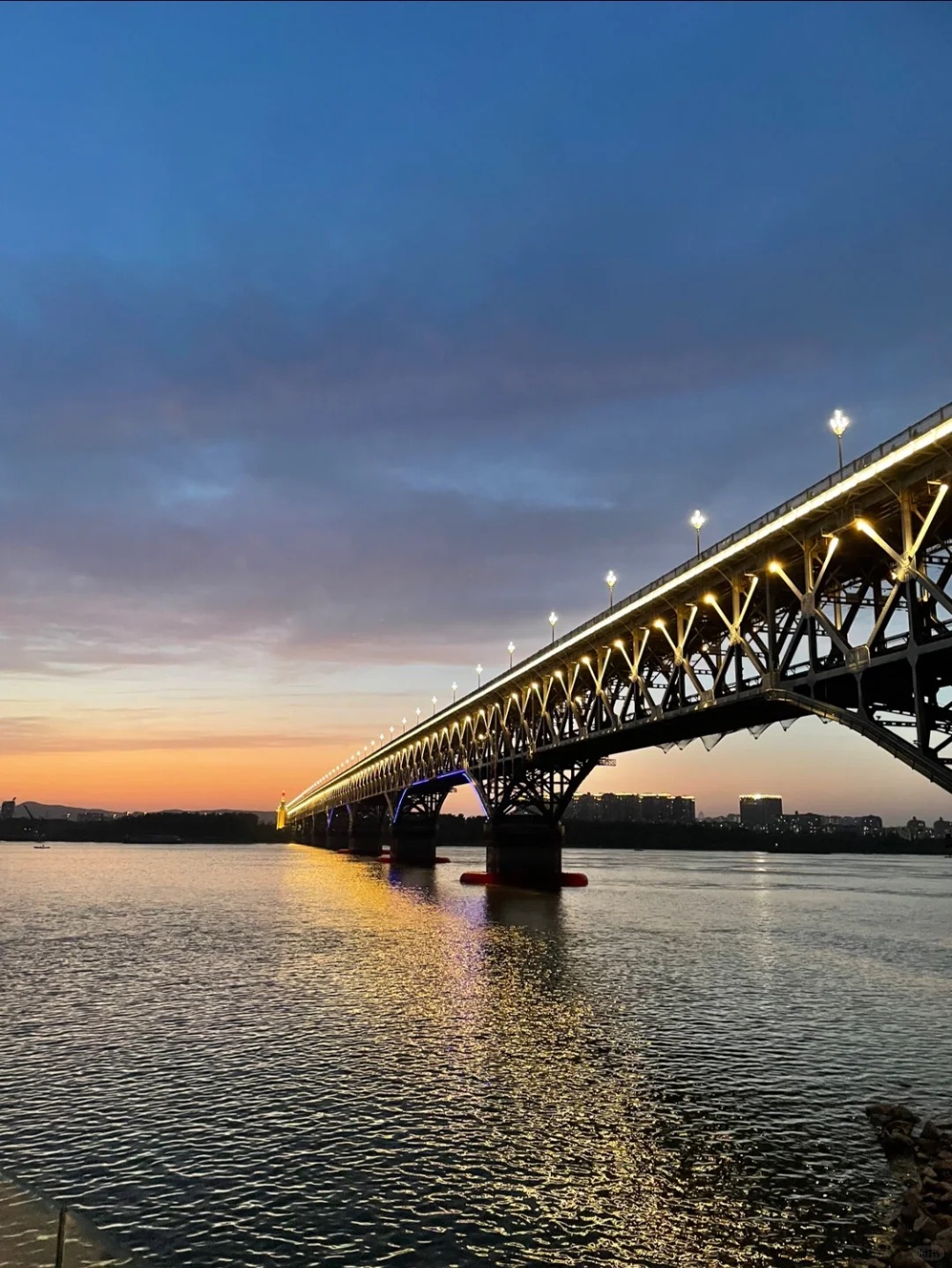
FAQ
- What is Nanjing Yangtze River Bridge famous for?
Nanjing Yangtze River Bridge is famous for being the first bridge to span the lower reaches of the Yangtze River, its double-deck design accommodating both road and rail traffic, and its significance as a symbol of China’s engineering prowess and self-reliance. - What’s inside Nanjing Yangtze River Bridge?
Nanjing Yangtze River Bridge has two levels: the upper deck for vehicular traffic and the lower deck for railway tracks. It also features pedestrian walkways, offering views of the Yangtze River and Nanjing cityscape. - Is Nanjing Yangtze River Bridge free?
Yes, Nanjing Yangtze River Bridge is free to cross, both for vehicles and pedestrians. - Is Nanjing Yangtze River Bridge worth visiting?
Yes, Nanjing Yangtze River Bridge is worth visiting for its historical significance, impressive engineering, and the panoramic views it offers of Nanjing and the Yangtze River. - What to do in Nanjing Yangtze River Bridge?
At Nanjing Yangtze River Bridge, you can walk along the pedestrian walkways, enjoy views of the Yangtze River and Nanjing skyline, take photographs, and learn about the bridge’s history and construction through informational displays. - How do I get to Nanjing Yangtze River Bridge in the local city?
In Nanjing, you can reach Nanjing Yangtze River Bridge by taking Metro Line 3 to Nanjing Yangtze River Bridge Station, or by bus lines 18, 31, 52, 133, or 307 to the bridge station. - How to visit Nanjing Yangtze River Bridge?
To visit Nanjing Yangtze River Bridge, take public transportation to the bridge, walk along the pedestrian walkways during daylight hours (5:00 AM to 10:00 PM), enjoy the views, and consider visiting nearby attractions like Yangtze River Bridge Park. For the best experience, visit during sunrise or sunset for stunning views.


